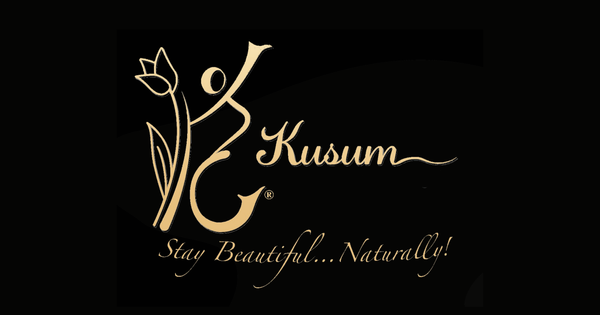
Moisturizers Debriefed
Share
Moisturizer refers to a substance that provides moisture [to a surface]. In cosmetics and dermatology, moisturizing refers to delivering, protecting, or altering the water content of the epidermis, the outermost layer of our skin. This blog discusses exciting facts about moisturizers, typical examples, and various benefits of moisturizing the skin.
What is a Moisturizer?
Like it or not, there is no definition or consensus of the term "Moisturizer" and what it means.1,2 The term "Moisturizer" was coined by marketers and salespersons to promote the sale of products that "moistened the skin".1
SKIN ANATOMY ESSENTIALS:
Our blog post discusses interesting facts on skin and its basic anatomy.
The term epidermis is derived from the Greek prefix "epi," meaning "outer layer," and the ancient Greek word "derma," meaning skin. 3 Since the epidermis is a visible and touchable part of the skin, a healthy epidermis significantly improves one's self-esteem.4
The epidermis cells are held together by fatty acid bonds that reduce water loss and help the skin stay moist.1 Dry skin can occur from excessive handwashing, hot or cold weather, exposure to excessive wind, and certain diseases. One may feel dryness, itching, or visibly irritated skin.
Role of moisturizers
A moisturizer provides a lipid or water-lipid barrier to protect the epidermis. This barrier prevents water loss through outer cell layers and preserves fatty acid integrity.
Other benefits of moisturizer include:
A) Anti-inflammatory properties:
Several nature-derived substances contain phenolic acids and ceramides that protect the lipid barrier and inhibit triggers and pathways that create inflammation in the skin.1 Rice bran oil contains ceramide, while Vitis vinifera (Grapeseed) oil contains phenolic acids that help inhibit inflammation.5,6
B) Anti-itching properties:
Moisturizers with water content help provide a cooling effect and reduce itching associated with dry skin.1 Several essential oils, such as Peppermint and Spearmint, can also provide cooling or numbing effects.
C) Wound healing properties:
Plant-based oils have demonstrated good wound-healing properties in laboratory tests and animal and human studies.7
Emollient, Humectants, Occlusives. Same-Same or Different?
Emollients are fatty acids and ceramides that help improve skin barrier function. They help improve skin texture and appearance.1 Emollients are combined with water to make Cream (<50% water content), or lotion (>50% water content). Plant oils such as Almond, Coconut, and Rice Bran are examples of emollients.
Humectants attract water molecules into the outermost layer of the skin.1 Glycerin, Hyaluronic acid, and Panthenol are examples of humectants.1
Occlusives are oils and waxes that create an impenetrable layer on the skin to prevent water loss.1 Avocado oil, Shea butter, and Zinc oxide are occlusives.1
Hydration vs Prevention of water loss.
Humectants provide water to hydrate the skin, while occlusives shield the skin to prevent water loss from external factors.
How to use a moisturizer?
Humectant moisturizers contain water molecules. They can be applied directly to dry skin.
Occlusive, oil-based moisturizers should be applied on moistened skin, preferably after a shower or sponge bath. 1 This way, wet skin retains moisture for a more extended period.
How often should one use a moisturizer?
Depending upon the product design, the ingredients may stay over the skin (occlusive) or penetrate the skin layers (humectant and emollients).1 Moisturizers may remain active for up to 8 hours after application.1 Depending on the severity of skin dryness, one may use a moisturizer from once to up to three times daily.1
What are the side effects or adverse effects of moisturizers?
Moisturizers can cause skin irritation. If skin irritation is noted, the product use should be ceased immediately.
Can moisturizers be applied on wounds or skin cuts?
Moisturizers should be applied only to intact skin.
What care should one take before using a moisturizer?
One must carefully review the product label and ingredient declaration to identify any allergens before using a moisturizer.
What are common forms of moisturizers?
Moisturizers are commonly sold as lotions, creams, ointments, and gel.1 Primary difference between them is the water content of the formulation.
Reference:
1) Purnamawati S, Indrastuti N, Danarti R et al. The role of moisturizers in addressing various kinds of dermatitis: a review. Clinical Medicine & Research Vol 15. No. 3-4: 75-87.
2) Lodén M. The clinical benefit of moisturizers. J Eur Acad
Dermatol Venereol. 2005;19(6):672-688, quiz 686-687.
3) https://my.clevelandclinic.org/health/body/21901-epidermis
4) Baumann L. Moisturizing Agents. In: Baumann L, editor.
Cosmetic Dermatology- Principles and Practices. 1st
ed. New York: Tata McGraw Hill. 2002;93-99.
5) Al-Warhi T, Zahran E, Selim S et al. Antioxidant and wound healing potential of Vitis vinifera seeds supported by phytochemical characterization and docking studies. Antioxidants (Basel). 2022 May; 11(5):881.
6)Leo TK, Tan ESS, Amini F et al. Effect of Rice (Oryza sativa L.) ceramides supplementation on improving skin barrier functions and depigmentation: an open label prospective study. Nutrients. 2022 Jul; 14(13): 2737.
7)Lin TK, Zhong L, Santiago JL. Anti-inflammatory and skin barrier repair effects of topical application of some plant oils. Int J Mol Sci. 2018 Jan;19(1):70.
